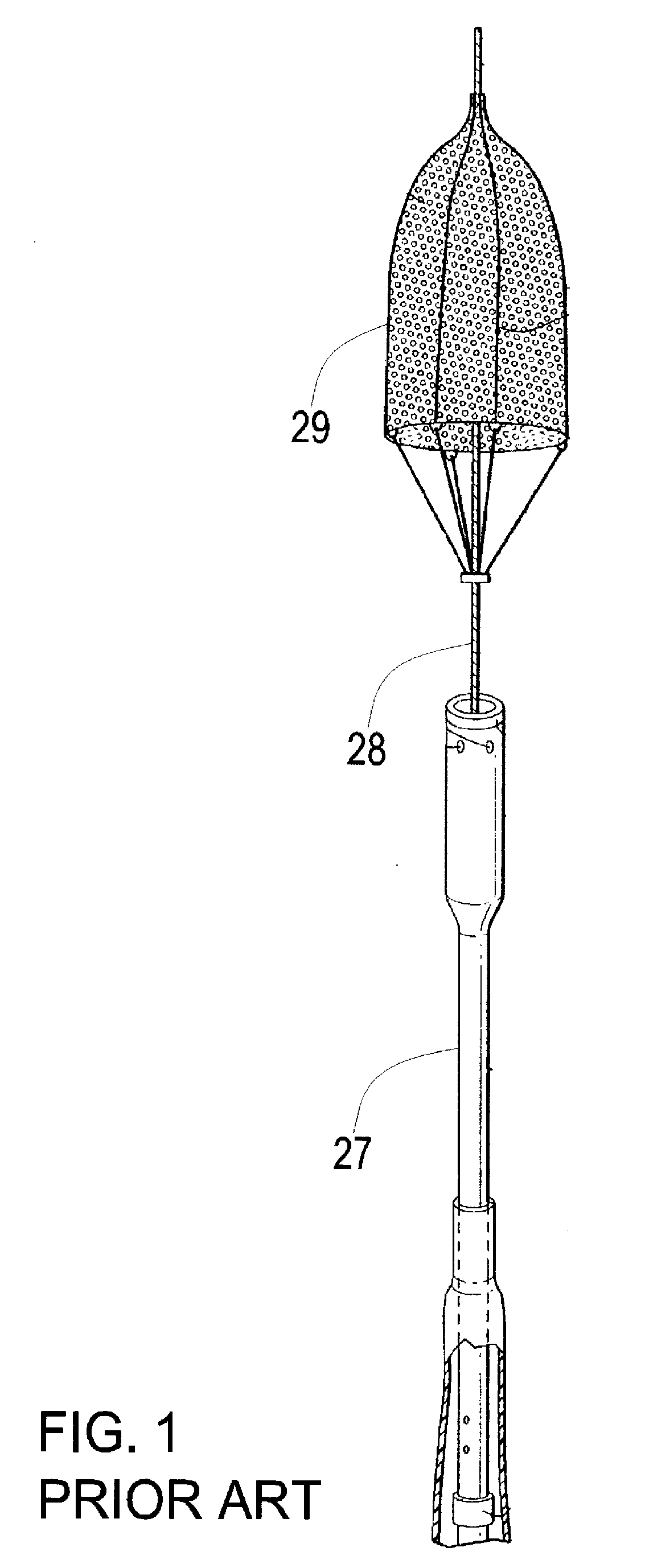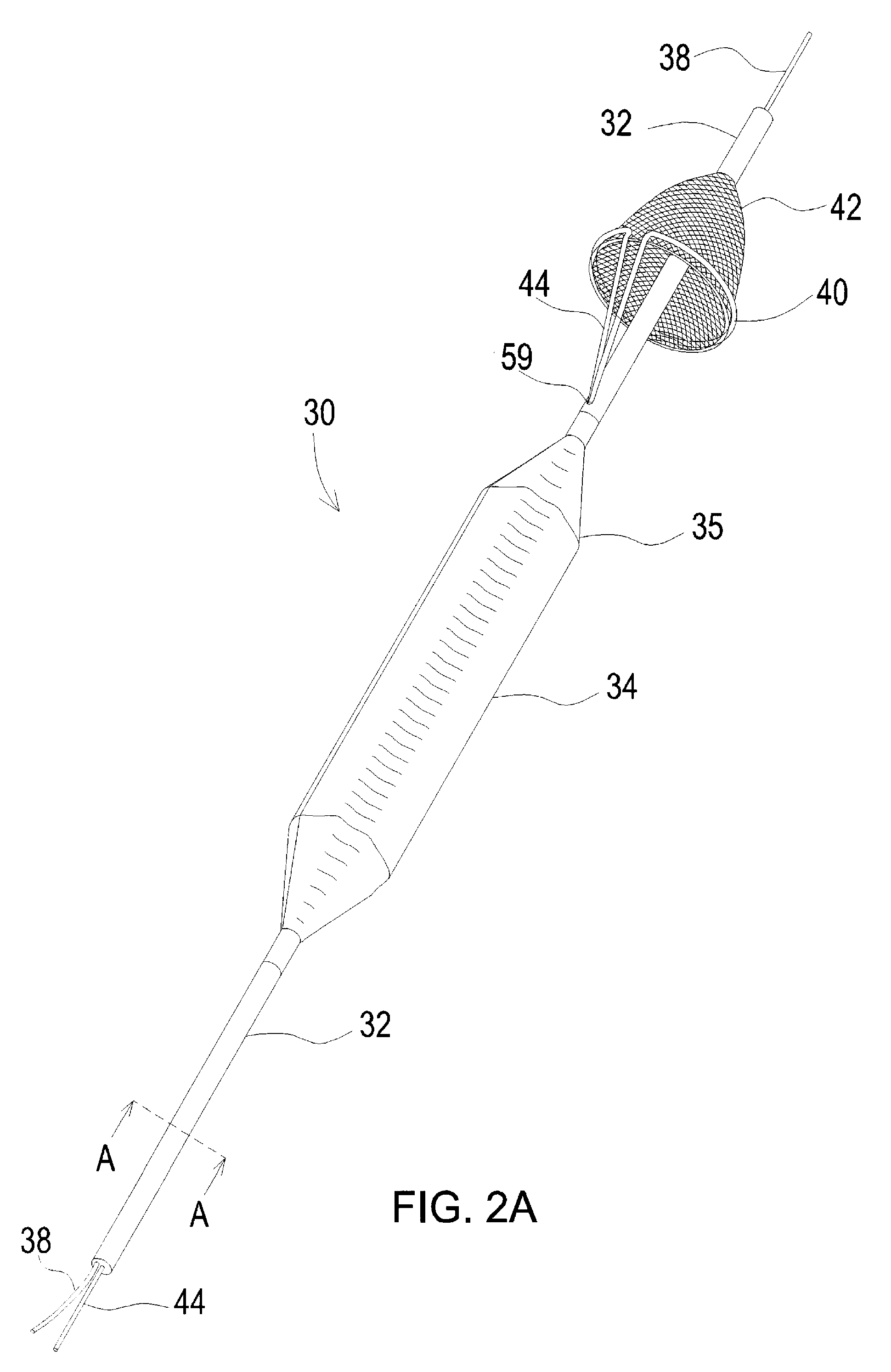Device for angioplasty with an embolization protection component and method therefor
a protection component and angioplasty technology, applied in the field of balloon angioplasty, can solve the problems of increased risk of patients, increased difficulty in blood flow through the arteries, and increased risk of procedures, and achieve the effect of simple deployment/retrieval method
- Summary
- Abstract
- Description
- Claims
- Application Information
AI Technical Summary
Benefits of technology
Problems solved by technology
Method used
Image
Examples
Embodiment Construction
[0086]It is a principal object of the present invention to provide health care to an atherosclerosis patient by providing an angioplasty device comprising an endoluminal dilatation balloon, with or without a stent, and a flexible filter as an integral part of the angioplasty device. The filter allows blood to flow through it but can also capture and remove from the blood vessel matter like thrombi or atherosclerotic debris, thus preventing distal embolization.
[0087]Referring now to FIG. 1, there is shown a prior art illustration of an embolization protection device. A filter assembly 29 is disposed on a guide wire 28, distal to a shaft 27. The filter 29 is not mounted directly on shaft 27, therefore deployment is more difficult, as explained in the background. This is in contrast to the inventive solution as disclosed in the description of the present invention hereinbelow.
[0088]Referring now to FIG. 2A, there is shown a perspective view of a device 30 for balloon angioplasty with a...
PUM
 Login to View More
Login to View More Abstract
Description
Claims
Application Information
 Login to View More
Login to View More - R&D
- Intellectual Property
- Life Sciences
- Materials
- Tech Scout
- Unparalleled Data Quality
- Higher Quality Content
- 60% Fewer Hallucinations
Browse by: Latest US Patents, China's latest patents, Technical Efficacy Thesaurus, Application Domain, Technology Topic, Popular Technical Reports.
© 2025 PatSnap. All rights reserved.Legal|Privacy policy|Modern Slavery Act Transparency Statement|Sitemap|About US| Contact US: help@patsnap.com



